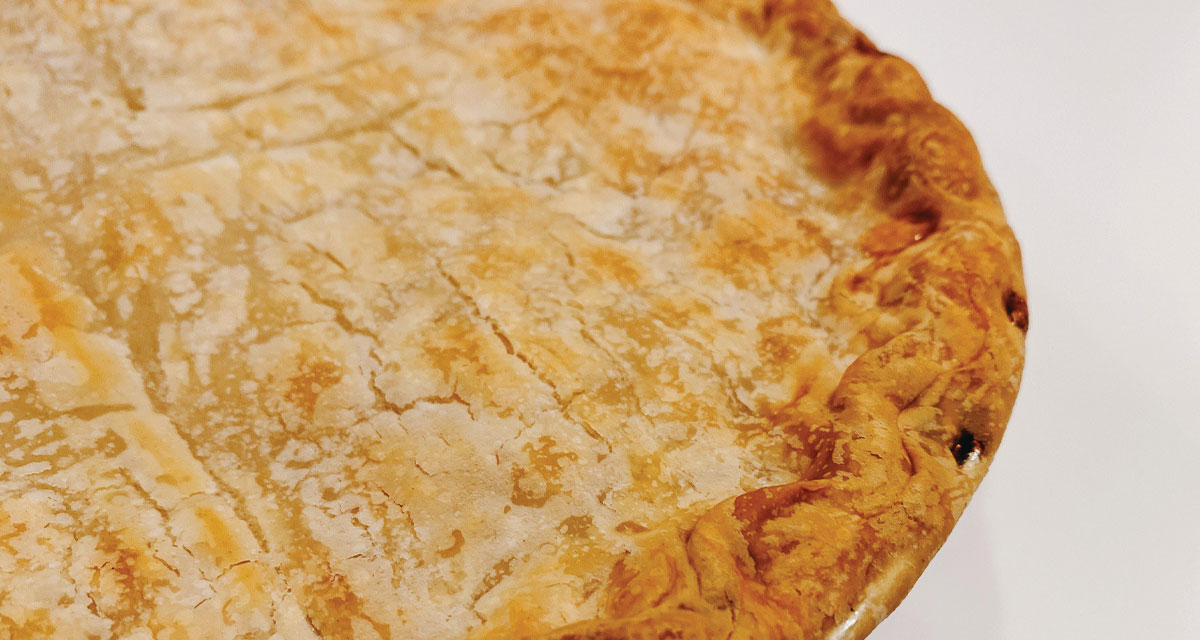Winston-Salem is steeped in Moravian history. Since its founding in 1766, the town of Salem was based on Moravian ideology. Coming after the Bethabara settlement, the location of Salem was chosen for its post on the Wachovia tract. In five short years, Salem replaced Bethabara as the area’s Moravian religious and commercial center. In 1913, Salem combined with the neighboring town of Winston and officially became Winston-Salem. While tobacco, railroads, and other industries took center stage in the new city, Winston-Salem didn’t lose the Moravian history that Salem brought with it into the merger. Today, that Moravian history is still standing strong and can be seen through Old Salem, Salem College, churches, traditions, and, of course, food. Whether you are a Moravian or not, you have probably eaten one of the many famous Moravian foods, which include chicken pie, cookies, sugar cake, and lovefeast buns. But have you ever wondered how these somewhat common foods became Moravian classics?
Moravian Chicken Pie –
Full of a double buttery crust, chicken, and gravy, and often served with mashed potatoes and green beans, the Moravian chicken pie originated in the town of Salem. Meat pies were staples in European diets, and the Moravian church was founded in central Europe. When early Moravians immigrated to the colonies, they brought their diets and eating habits with them. Few to no vegetables are found in the European meat pies. Throughout the years, the Moravian chicken pie has closely followed its traditional recipe. Churches often have chicken pie fundraisers, replicating this recipe numerous times and bringing in large sums of money. Today, people can enjoy the dish at restaurants in Winston-Salem, purchase it from these restaurants and bakeries, or make a version for themselves at home.
Moravian Ginger Cookies –
A simple combination of brown sugar, molasses, cloves, ginger, and cinnamon, rolled paper thin and baked until crisp, Moravian ginger cookies are another popular food item throughout the world. Based on the German Lebkuchen cookie, the Moravian version first appeared in 1753 when the Moravians moved to Bethabara and the cookies were referred to as “cakes.” Ginger and cloves are two spices that store well and can still be used after long trips. The cookies’ dough was made in large batches and not all baked at once; it was able to be stored for days or weeks at a time. Storing the dough for long periods of time allowed for the spices’ flavor to marinate and intensify. As for rolling the cookies paper-thin, this helped the dough go farther and for more cookies to be made. Also, the molasses can become hard when baked, so a thin cookie is a better option for eating. The spices used were expensive during colonial times and caused the cookies to be baked only on holidays and special occasions, an association that still exists today. Many people eat only Moravian ginger cookies during the holidays, making it a traditional Christmas food.
Moravian Sugar Cake –
The third recipe brought with the Moravians from Europe, Moravian Sugar Cake, isn’t your traditional cake, but has rather a coffee-cake consistency. It is a mixture of yeast-raised dough and mashed potatoes. A very popular item in bakeries throughout Winston-Salem, the dough is shaped into a square and left to rise. After it has risen, holes are poked into the dough and hot butter, brown sugar, and cinnamon is poured into them. Once baked, the topping becomes crunchy and yummy. Rumor has it that during the 1700s and 1800s, Moravian sugar cake was such an often-requested treat that men would marry women with big fingers and thumbs because that meant more of the sugary topping could be mixed into the dough. Whether or not that is true, Moravian sugar cake’s popularity has never fallen.
Moravian Lovefeast Buns –
The first lovefeast was held in Germany on August 13, 1727, as a celebration of the renewal of the Moravian Church. This service is based on nourishing the soul and adding more love and peace into the world. It is a celebration full of singing and messages. Worshipers also partake in a meal of bread and sweetened coffee that is passed out by “dieners,” the German word for “servers.” Over time the bread, officially known as the “lovefeast bun,” and coffee have become favorites of many. The lovefeast bun is a simple recipe with an “M” or a cross baked in the middle of the dough. It is similar to a sweet roll, but in a hamburger-bun shape. It has an orange flavoring and is filled with different spices. Lovefeasts are held at various holidays and occasions throughout the year and wouldn’t be complete without the traditional lovefeast buns.
At numerous locations in Winston-Salem, you can find at least one of these Moravian treats. A simple stop at your neighborhood grocery provides a chance to pick up a sugar cake or pack of ginger cookies. We all have our favorite Moravian treats (mine is the ginger cookies), but one thing is for sure, these recipes will never go out of style and will always be loved in Winston-Salem.



















